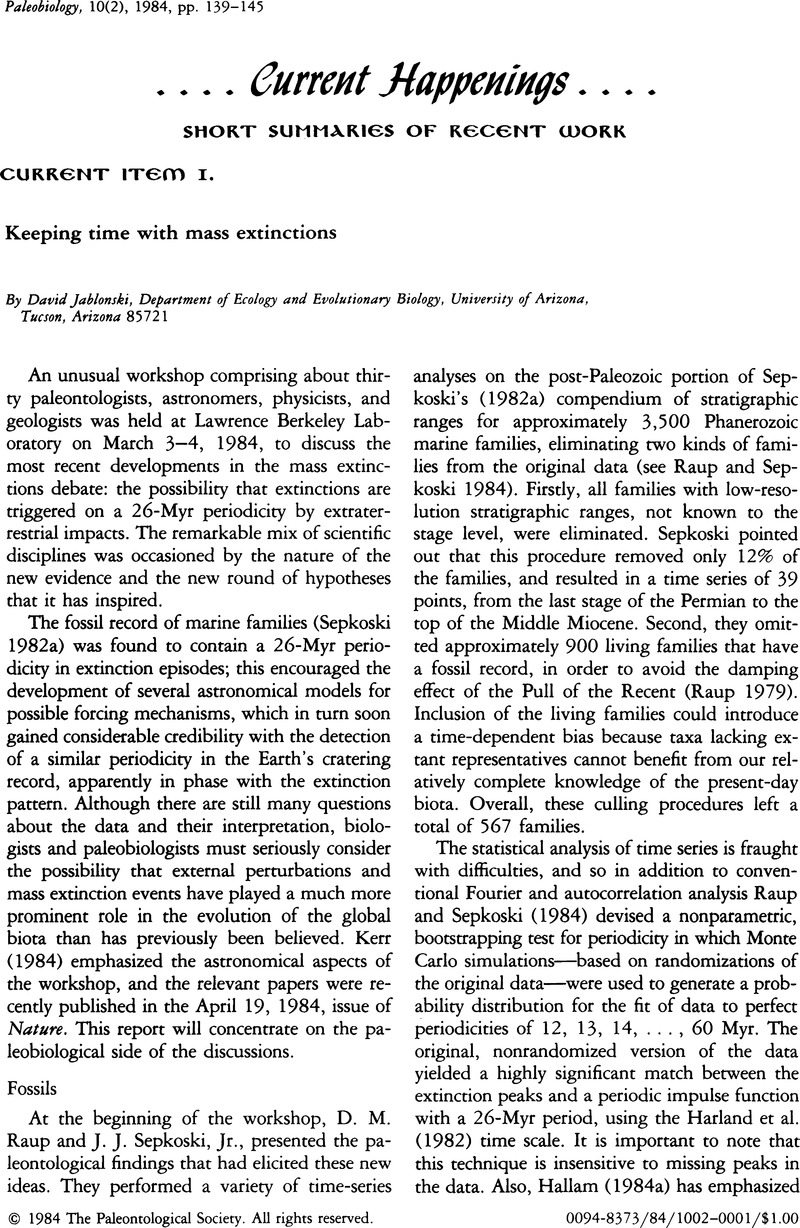Crossref Citations
This article has been cited by the following publications. This list is generated based on data provided by Crossref.
Rieppel, Olivier
1985.
Der neue Katastrophismus: Fakten und Interpretation.
Naturwissenschaften,
Vol. 72,
Issue. 12,
p.
619.
HOFFMAN, ANTONI
1986.
Was there 26-Myr periodicity of extinctions?.
Nature,
Vol. 321,
Issue. 6069,
p.
535.
Westrop, Stephen R.
and
Ludvigsen, Rolf
1987.
Biogeographic control of trilobite mass extinction at an Upper Cambrian “biomere” boundary.
Paleobiology,
Vol. 13,
Issue. 1,
p.
84.
Futuyma, Douglas J.
1990.
Evolutionsbiologie.
p.
391.
Myers, Corinne E.
MacKenzie, Richard A.
and
Lieberman, Bruce S.
2013.
Greenhouse biogeography: the relationship of geographic range to invasion and extinction in the Cretaceous Western Interior Seaway.
Paleobiology,
Vol. 39,
Issue. 1,
p.
135.
Ponomarenko, Alexandr G.
and
Bashkuev, Alexei S.
2018.
First Triassic record of the beetle family Permocupedidae (Insecta: Coleoptera): a peculiar example of a Lazarus taxon.
PalZ,
Vol. 92,
Issue. 4,
p.
587.



